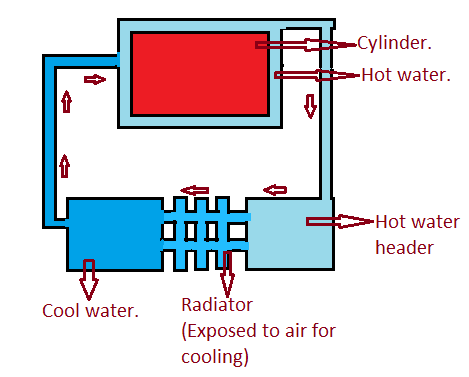The main Difference between Turbojet & Turboprop is explained as follows:
About Turboprop Engine
A turbojet is an air breathing gas turbine engine executing an internal combustion cycle during the operation. It also belongs to the reaction engine type of the aircraft propulsion engines. Sir Frank Whittle of United Kingdom and Hans von Ohain of Germany independently developed the practical engines concept during the late 1930s, but only after the WWII, the jet engine became a widely used propulsion method.
The turbojet engine consists of three main sections: the compressor, the combustion chamber, and the turbine. The air is taken in by the turbojet engine through an inlet duct and compressed by the compressor. The compressed air then enters the combustion chamber where fuel is injected and ignited. The hot gases from combustion expand through the turbine, providing power to drive the compressor. The exhaust gases are then ejected through an exhaust nozzle.
The turbojet engine has many advantages over other types of aircraft engines. It is very efficient, lightweight, and has a high power-to-weight ratio. Turbojet engines can also operate at very high altitudes where there is little oxygen available for combustion.
However, turbojet engines also have some disadvantages. They are very loud and produce a lot of pollution. They also require a high fuel consumption rate, which can be a problem for long-distance flights.
Overall, turbojet engines are a very important part of the aviation industry and have helped to make air travel more efficient and accessible for everyone.
About Turboprop engine
The turboprop engine is an advanced version of the turbojet engine, where the shaft work is used to drive a propeller through a reduction gear mechanism attached to the turbine shaft. In this form of jet engines, majority thrust is generated by the propeller reaction and the exhaust generates a negligible amount of usable energy; hence mostly not used for thrust. Turboprop engines are widely used in small aircrafts and helicopters because they offer high power-to-weight ratio with low fuel consumption.
Turboprop engines are quieter than piston engines and Turboshaft engines. The main advantage of Turboprop over Turbojet is that it has better fuel economy at subsonic speeds which make it ideal for short-haul flights. Turboprops can be easily converted into Turboshafts by adding a free power turbine to the rear end of the engine which drives an external
Turboprop engines are most commonly used on smaller aircraft, where the lower operating costs and better fuel economy of a turboprop engine are more important than the higher speed of a turbojet engine. Turboprops are also used on larger aircraft, where the high reliability and low noise of a turboprop offset the disadvantage of its lower speed.
The main disadvantages of turboprop engines compared to turbojet engines are their lower thrust-to-weight ratio, lower top speed, and poorer fuel economy at high speeds. Turboprops are also louder than turbojets due to the propellers; however, advances in propeller technology have made turboprops nearly as quiet as turbojets. Turboprop engines are also more complex and expensive than piston engines, making them less common on small aircraft.
Overall, turboprop engines are a good choice for short-haul flights and smaller aircraft where fuel economy and reliability are more important than top speed. However, they have some disadvantages compared to turbojet engines that should be considered before making a decision about which type of engine to use on your aircraft.


